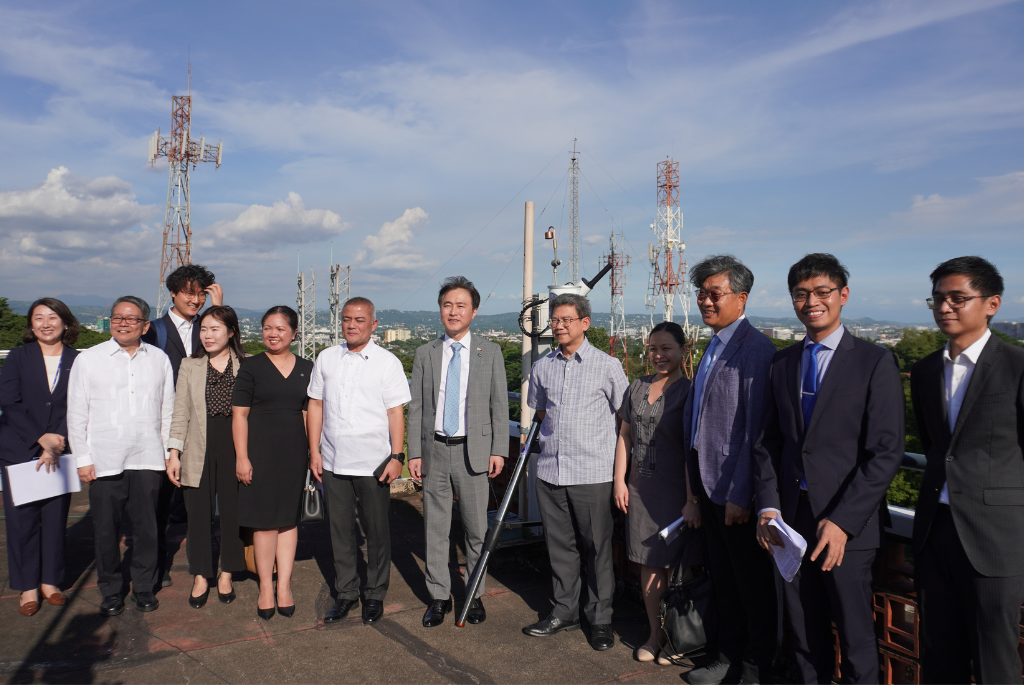A ceremonial turnover of the Pandora instruments, part of the Pan-Asia Partnership for Geospatial Air Pollution Information Project and the Pandora Asia Network (PAPGAPI-PAN) Philippines Project, was conducted by the Korea International Cooperation Agency (KOICA) and the Philippine Space Agency (PhilSA) at the Heyden Hall of Manila Observatory in Quezon City, on August 12, 2024.
The event was graced by the Korean Ambassador to the Philippines, H.E. Lee Sang-Hwa, KOICA Country Director Kim Eunsub, PhilSA Director General Joel Joseph S. Marciano, Jr., Manila Observatory Executive Director Fr. Jose Ramon T. Villarin, S.J., and other guests and partners.
THE GIFT OF PANDORA
Pandora is a ground-based remote sensing instrument that will complement the data from the Geostationary Environment Monitoring Spectrometer (GEMS) aboard Korea’s GEO-KOMPSAT-2B satellite. The data from the instruments will serve the PAPGAPI-PAN project’s aim for technology transfer, data-sharing, and capacity building initiative on air pollution in many countries, including the Philippines.
The Manila Observatory (MO) is one of the recipients of Pandora along with the Department of Natural Resources – Environmental Management Bureau (DENR-EMB) in Palawan, Mariano Marcos State University (MMSU) of Ilocos Norte, and University of San Carlos (USC) of Cebu. These instruments will be part of the Pandonia Global Network (PGN) that provides real-time standardized, calibrated, and verified air quality data.
OPENING OF POSSIBILITIES
Ambassador Lee Sang-Hwa expressed that the project “aims to enhance air quality monitoring capabilities by integrating satellite and ground measurements with Pandora instruments feeding real-time calibrated air quality data.” He added that this will support evidence-based and science-based policy-making and strengthen national capacity to address air pollution.
Fr. Villarin remarked that “Aerosols—light tiny particles—[are] very crucial to our understanding of climate change, not just for our lungs.” He added that understanding aerosols will help in making informed decisions on how to address climate change. He also hopes that Pandora will achieve vertical integration of space and ground data, as well as horizontal resolution for comprehensive synoptic field monitoring.
HOPE FOR AIR QUALITY MONITORING
In her message, Dr. Gay Jane P. Perez, Deputy Director General for Space Science and Technology at PhilSA, expressed her hopes in utilizing data from Pandora, the GEMS and other Earth observation satellites. She also conveyed her excitement about the work that PhilSA and its partner institutions will undertake in the future.
Also present during the press conference and panel discussion were Dr. James Bernard Simpas of the MO – Air Quality Dynamics Laboratory, Engr. Esperanza A. Sajul from the DENR-EMB, Dr. Nathan Alibuyog of MMSU, and Dr. Patrick John Lim from USC. They expressed great enthusiasm in the project, noting its potential applications in air quality monitoring, research, and local policy-making.









